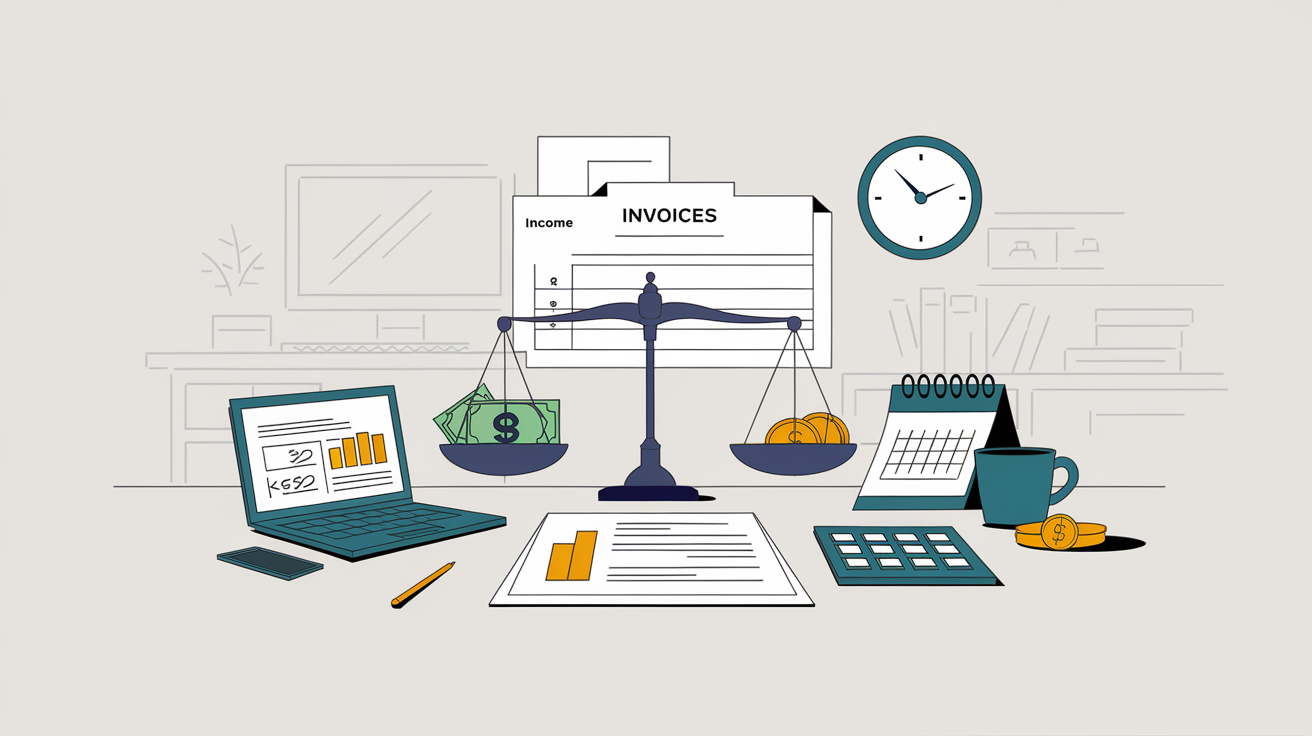Freelancing & finances: Budget smarter, charge fairly, stress less

In Part 2 of our series, we’re breaking down the real cost of freelancing—from hidden expenses to sustainable pricing—so you can build stability from day one.
You might have heard that freelancers “earn more” than salaried employees. While that might be true on paper, the difference isn’t quite as glamorous as it seems. Let’s take a closer look at how the two stack up against each other.
Freelance income isn’t the same as employee income
Although earnings vary depending on country, industry, and profession, freelancing doesn’t necessarily equate to higher income.
In Germany, for example, the average salary for a full-time employed software developer is around €61,000 per year, but once you factor in social security contributions and overhead, the total cost to the employer can reach €83,300 or more.
A freelance developer, on the other hand, might charge €83/hour, which can result in a much higher gross income—but that rate must cover everything an employer would typically provide, including taxes, health insurance, retirement savings, equipment, vacation time, and periods without client work.
In the U.S., a 2021 report found that only 44% of freelancers earned more than they did in their previous job, meaning the majority earned about the same or less at the beginning. That’s because freelancers carry the full weight of their business expenses. What seems like a generous rate can quickly shrink when the full financial picture comes into view.
The cost of losing benefits
Let's start here since this is one of the most overlooked aspects of freelancing—the sudden disappearance of employer-covered perks.
For example, in the U.S., employee benefits often make up around 30% of the total compensation. That includes:
- Health insurance
- Retirement contributions
- Paid leave
- Professional development
- Equipment stipends
When you freelance, you pay for those.
Make sure your freelance rate and savings buffer reflect these added costs. Since healthcare is one of the most significant and complex benefits to replace, here’s how it looks in a few different countries:
United States
- Must buy private health insurance (unless covered by a spouse or eligible through COBRA).
- Responsible for self-employment tax (15.3%) and quarterly estimated tax payments.
- Can operate as a sole proprietor with minimal paperwork, though many freelancers eventually register an LLC for liability and tax benefits.
United Kingdom
- Must register with HMRC once income exceeds £1,000/year source.
- Pay income tax plus Class 2 and 4 National Insurance.
- Healthcare through the NHS is free at the point of use, which significantly reduces medical costs for freelancers.
Germany
- Must register with the Finanzamt (tax office) and possibly Gewerbeamt (trade office), depending on your profession source.
- Health insurance is mandatory—either through public or private providers—and can be expensive, especially for solo freelancers.
- Freelancers may qualify as Freiberufler (freelance professionals), a status that exempts them from trade tax and simplifies reporting requirements.
Budgeting for irregular income
The next most talked-about shift in freelancing is the move from a predictable paycheck to variable income. While it’s often framed as a dramatic “feast or famine” cycle, that doesn’t have to be your reality.
With the right systems in place—like staggered contracts, retainer clients, and consistent outreach—you can create more stability than the stereotype suggests. Financially, though, it still makes sense to build a buffer.
A good rule of thumb is to structure your budget around your lower-income months, not your best ones. Many freelancers aim to live off 70–80% of their average monthly income and treat the rest as savings for slower periods or future investments.
And as we touched on in Part 1, the usual advice is to save 3–6 months of living expenses before going freelance. But in today’s economy, aiming for 9–12 months is a safer bet if you can swing it. That cushion isn’t just for the quiet months—it’s also for:
- Clients who pay on their own timeline (and sometimes need a few nudges).
- The in-between phases when one contract ends and another hasn’t started.
- Sudden expenses, such as replacing a broken laptop or an unexpected medical bill.
- Upfront costs, such as setting up your website, buying software, or investing in branding.
While you can’t prevent every delay, you can set yourself up for smoother cash flow.
Set clear invoicing terms from the start—like 14- or 30-day payment windows, partial deposits before beginning work, or late fees if needed. These small policies can make a big difference in how steady your income feels, even when projects aren’t rolling in.
If you're still in a salaried role, it’s a great opportunity to run a “freelance simulation”.
Try living off what you estimate your freelance income would be and save the rest. It’s a great way to test the waters, gradually adjust your habits, and build your savings runway while you still have a safety net.
Setting rates that reflect reality
Now that you’ve planned for benefits and slower months, it’s time to make sure your rates reflect more than just the hours you spend working. They need to account for everything that goes into running your business, including:
- Time off: Vacation or sick days.
- Admin and marketing: Hours you can’t bill to clients.
- Taxes and benefits: To avoid surprises at tax time, set aside 20-30% of each payment in a separate account.
- Business expenses: You don’t need every piece of software and hardware right away. Start lean, using a simple spreadsheet and invoicing system. Skip the expensive branding packages, premium productivity apps, or paid ads until you know what you really need. As you grow, you can upgrade to tools like QuickBooks, Xero, or even partner with an accountant who works with freelancers.
Rate calculators and benchmarks can help you reverse-engineer your ideal income into a sustainable rate. Just be careful not to start too low, a common mistake driven by imposter syndrome or fear of scaring off clients.
And don’t set your rate and forget it. Set a calendar reminder to review it every 6–12 months. As your skills, experience, and portfolio grow, your rates should too.
Wrapping up: Get your finances in order and your mindset will thank you later
Freelancing can absolutely offer the freedom, flexibility, and earning potential you’re after—but only if you’ve built a solid financial base first. From budgeting to taxes to setting realistic rates, preparation is what turns unpredictability into something manageable.
Once that’s in place, there’s a different kind of challenge waiting: you.
In Part 3 of this series, we’ll explore the mental and emotional side of freelancing—imposter syndrome, isolation, burnout, and how to stay motivated when no one’s setting deadlines but you.
